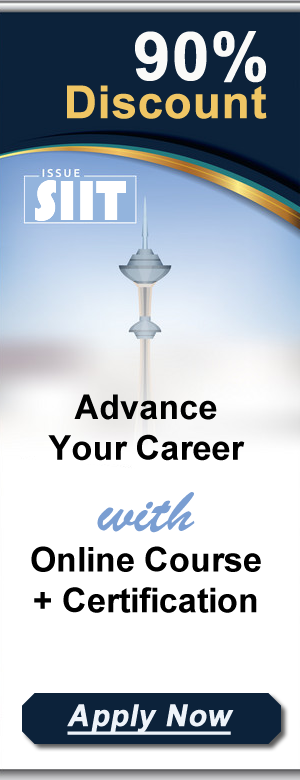
Empowering Tribal Libraries: A Co-Design STEM Initiative
Section 1: Bridging the STEM Gap in Indigenous Communities
The NASA Science Activation program's initiative to engage Tribal libraries in STEM education highlights a critical need: addressing the persistent underrepresentation of Indigenous peoples in science, technology, engineering, and mathematics (STEM) fields. This disparity is not merely a matter of numbers; it reflects systemic inequalities in access to resources, culturally relevant education, and opportunities for participation. The workshop, hosted at the New Mexico State Library, directly confronted this challenge by focusing on co-design—a participatory approach that empowers community members to shape educational content and activities. This strategy recognizes the vital role of Indigenous knowledge and perspectives in fostering authentic and effective STEM engagement.
The success of the workshop, as evidenced by the overwhelmingly positive participant feedback, underscores the power of collaborative, culturally responsive approaches. By centering the voices and expertise of Tribal librarians and community members, the NASA initiative demonstrated a commitment to building trust and fostering genuine partnerships. The emphasis on co-design is not simply a pedagogical choice; it's a crucial step toward addressing historical injustices and ensuring equitable access to STEM education for all. This approach aligns with growing recognition within the STEM education community of the need to decolonize curricula and create more inclusive learning environments.
The selection of space science as the focal point, informed by the input of Tribal advisors, reflects a strategic choice to engage participants with a captivating and widely accessible theme. However, the workshop’s openness to integrating Earth science, environmental science, and engineering design demonstrates flexibility and a responsiveness to the diverse interests and priorities within the participating communities. This adaptability is essential for building successful STEM programs that resonate with the specific needs and contexts of different communities. Future initiatives could build upon this model by expanding the range of STEM topics covered and incorporating even greater community input in program design.
The involvement of various stakeholders, including the New Mexico State Library, the NASA Science Activation program, and the participating Tribal libraries, highlights the importance of collaborative partnerships in achieving meaningful change. Effective STEM education requires a coordinated and sustained effort from diverse institutions and organizations, each contributing their unique strengths and resources. The success of this workshop serves as a powerful example of the potential of such collaborations to promote equity and access in STEM education within Indigenous communities. Further research should focus on replicating and scaling this model to other regions and communities, fostering broader systemic change.
Section 2: Co-design in Action: Culturally Relevant STEM Activities
The workshop's emphasis on co-design extended beyond simply gathering feedback; it actively involved participants in shaping the very activities they would use to engage their communities. This participatory approach ensures that the resulting programs are not just relevant but deeply resonant with the cultural values, histories, and traditions of the participating communities. This is a significant departure from traditional STEM education models which often fail to account for cultural contexts.
The categorization of activities—passive programming, physically active, engineering design, and STEAM—provided a structured framework while allowing for considerable flexibility and creativity. The post-activity discussions, crucial components of the co-design process, facilitated participants' critical reflection on how to modify the activities to align with their cultural context. The crater-creation activity, for example, sparked extensive conversation about using local materials and integrating elements of local topography and art.
These discussions highlight the profound potential of co-design to transform STEM education from a potentially alienating experience to a culturally enriching one. By empowering communities to adapt activities to their unique contexts, the co-design process ensures that STEM learning becomes an avenue for celebrating and preserving cultural heritage while simultaneously building skills for the future. This approach directly addresses concerns about the lack of cultural relevance in STEM education, a criticism often leveled against standardized curricula that fail to connect with the lived experiences of diverse learners.
Section 3: Participant Voices and Evaluation: A Measure of Success
The workshop's success is best measured not just by numerical data but by the qualitative feedback provided by participants. The overwhelmingly positive responses—with over 50% exceeding expectations and the rest meeting them—provide compelling evidence of the program's effectiveness. However, even more significant are the specific comments reflecting feelings of comfort, empowerment, and a sense of ownership over the learning process. One participant's remark about feeling safe to share ideas and another's expression of surprise and delight at being able to contribute to the design process speaks volumes about the transformative potential of a co-design approach.
The high return rate of evaluation surveys (sixteen out of sixteen participants) speaks to the engagement and enthusiasm generated by the workshop. This level of participation is a testament to the program’s success in creating a supportive and inclusive environment, enabling participants to freely express their views and share their experiences. This positive feedback should be actively used to inform future iterations of the workshop and similar initiatives, ensuring that the program continues to meet the needs and expectations of its participants.
The evaluation process itself highlights the importance of incorporating qualitative data alongside quantitative measures to gain a holistic understanding of program effectiveness. By listening to the voices of the participants, the organizers were able to gather rich insights into the strengths and weaknesses of the workshop and identify areas for improvement. This emphasis on participant-centered evaluation is a critical component of the co-design process and underscores the importance of creating educational programs that are responsive to community needs. Further research could focus on developing more robust qualitative evaluation methods to capture the nuances of community experiences.
Section 4: Implications and Future Directions for Tribal STEM Education
The NASA@ My Library project and its co-designed STEM workshop represent a significant step toward improving STEM education in Indigenous communities. The findings and experiences from this initiative possess implications that extend beyond the immediate context of the workshop. The emphasis on co-design suggests a valuable model for other STEM education programs seeking to engage underrepresented populations. This participatory approach, when properly implemented, can foster genuine collaboration, build trust, and create culturally responsive learning environments.
Replication and scaling this model across various communities will be crucial in maximizing the impact. The success of this workshop necessitates further investment and commitment from educational institutions, government agencies, and funding organizations to broaden its reach and create sustainable STEM education programs within Indigenous communities. Such initiatives should focus not only on replicating the workshop’s methodology but also on tailoring its content and approach to the unique needs and priorities of diverse Indigenous communities.
The workshop also highlights the critical role that libraries play as community hubs for learning and engagement. By supporting and empowering libraries to offer STEM programs, funding agencies and educational organizations can leverage existing community infrastructure to promote greater equity and access in STEM education. Furthermore, the integration of local knowledge and traditional practices within STEM education can enrich the learning experience for all students, fostering cross-cultural understanding and appreciation.
Section 5: Conclusion: A Collaborative Path to STEM Equity
The Tribal Library Co-Design STEM Space Workshop serves as a powerful model for promoting equitable access to STEM education within Indigenous communities. The workshop's success underscores the importance of a culturally responsive, participatory approach that places community voices at the center of the design and implementation process. By emphasizing co-design, the initiative not only delivered effective STEM programming but also fostered a sense of ownership and empowerment among participants.
The overwhelmingly positive feedback from participants highlights the transformative potential of this approach, suggesting that a similar model could be widely applicable in other contexts seeking to address educational equity and improve STEM engagement among underrepresented populations. Moving forward, it's crucial to invest in the replication and scaling of this model, ensuring its sustainability and broader impact. The commitment to collaborative partnerships, culturally relevant content, and participant-centered evaluation is essential to achieving lasting and meaningful change in STEM education. The workshop’s legacy extends beyond its immediate participants; it provides a blueprint for creating more equitable and inclusive STEM learning opportunities for Indigenous communities and beyond. By centering Indigenous knowledge and perspectives, we can create a more just and equitable future in STEM.

